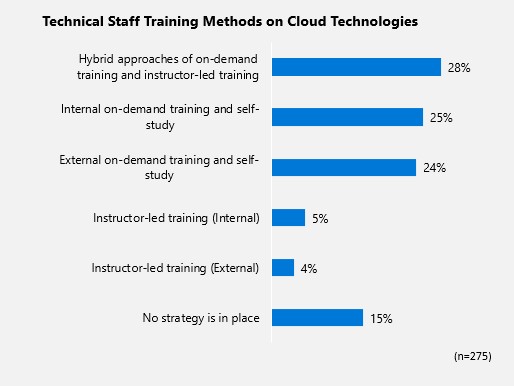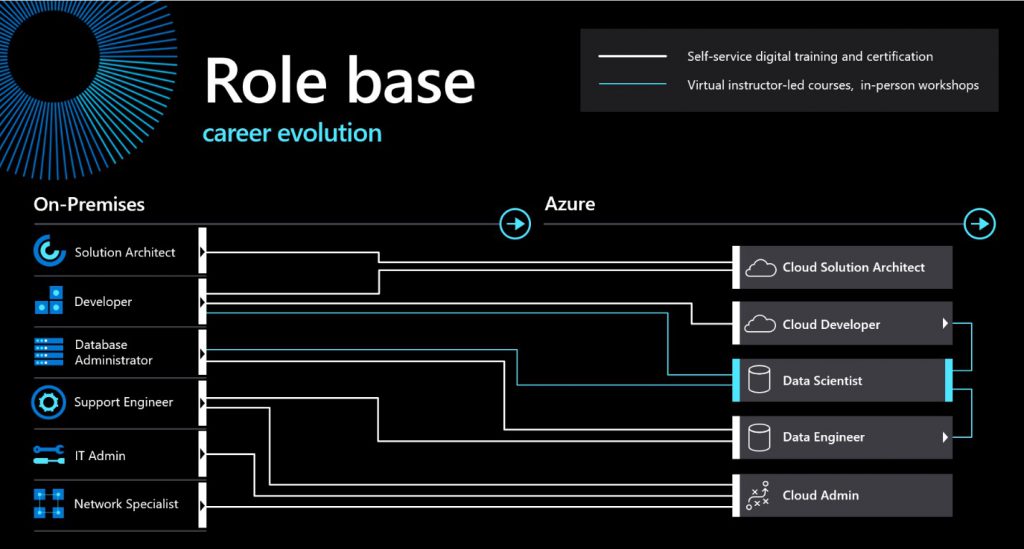Your next great hire may already work for you

This is the third of three blogs on the value of skilling. The series is designed to provide partners with information on the value of staying current on their Microsoft technical training and includes insights and best practices. The first blog, Skills development: a top priority, sets up the series with the importance of constant development in a modern partner practice. The second blog, The value of staying current with skills development, helps partners align their skills with current and planned solution sets. And the third blog, Your next great hire may already work for you, shares how upskilling existing talent can make more sense.
The demand for skilled technical talent is so high –especially for sought-after roles such as Data Scientist, Cloud Architect, and IoT (Internet of Things) Engineer – that many partners will find that upskilling existing talent makes more sense than competing for those candidates in the job market. And even if you can initially hire some of these roles, sustaining and growing a cloud practice requires an ongoing investment in skills development to keep experienced employees trained on the latest technologies.
A PwC survey of more than 10,000 showed that excellent training and development programs ranked third behind career progression and compensation for the top characteristics that make an organization a good place to work.
The benefits of reskilling
If you choose to reskill, you incur the cost of training, and lost productivity while workers are in the process. If you choose to fire unskilled workers and hire skilled talent, costs include severance, hiring, wages and benefits. The average cost per hire is approaching $US4,500.00 according to the Society for Human Resource Management. And a recent report form the World Economic Forum shows that, in the U.S. alone, with an overall investment of US$4.7 billion, the private sector could reskill 25% of all workers in disrupted jobs with a positive cost/benefit balance.
A well-run training program creates other benefits, including:
- Increased loyalty and job satisfaction
- Faster time to productivity
- Decreased turnover
- Lower talent acquisition and onboarding costs
- Motivation to improve skills for promotions
- Trained talent already familiar with your culture
For most partners, reskilling to fill needed roles will require a more strategic focus on training. Consider these findings from our 2018 partner survey:
- 77% lack a formal training department
- 58% give less than 10% of employee time to ongoing professional development
- 72% claim self-study is the top process for training employees
So, what are your best options? Microsoft partners today use a combination of internal and external on-demand and instructor-led training.

With Azure cloud technologies, technical roles are rapidly evolving, and new capabilities are being introduced all the time. As a Microsoft partner, you have access to all the training types above and your staff’s learning journeys will differ, depending on their current roles and the roles to which they aspire. For example, if you have developers who build on-premises solutions and need to grow their skills more in line with data scientists, you can now find learning paths that align with your staffing and business goals.
The first step is to assess your current capabilities. Take the Partner Transformation Readiness Assessment. It provides a structured methodology and delivers customized resource recommendations for all phases of cloud lifecycle management.
To get the buy-in from your technical workers, you need to understand how their roles are evolving and help them find the right learning journey from an introduction to Azure fundamentals to certification preparation to advanced workloads.

Have a structured learning & development program
It is hard to make time for ongoing learning, but if it is relevant and part of the daily, weekly, or monthly work rhythm, it can become a valued part of your employees’ benefits and integral to their career advancement. And if done strategically, you can train for future roles that are going to be costly to attract and hire.
We recommend implementing skills profiles and clear career paths and expectations for achievement as shown in the Recruit, Hire, Onboard, and Retain Talent playbook. There you will find many of the desired cloud-based job roles and the job titles that partners draw from to fill those roles, along with the capabilities and certifications needed. To take that a step further, we have created learning paths for those roles, from beginner to advanced, across all our solution areas to help ensure your staff has the expertise needed for the jobs they are doing—or desire doing.
Continuous learning programs can guide both human resources and employees in defining career development paths, with the relevant training needed to meet your company’s strategic and growth goals.
Do you still think training is too expensive? I would ask what the cost is of not providing training. Individuals with the capabilities you need, already know their worth. And wherever they land, they know that keeping their skills up to date will help them prosper. Chances are, they won’t land with you without a successful learning and development program.





